The best days in a curator’s professional life are often the days spent in the conservation lab. That’s where we get to spend quality time with works of art and talk to conservators, the fantastically knowledgeable people who can look through a microscope or infrared scope and tell you the life history of an object. I was lucky enough to spend several hours in the painting conservation lab of the Midwestern Art Conservation Center (MACC), a private conservation center housed at the Minneapolis Institute of Arts (MIA). I was there to confer with conservator David Marquis just before he begins cleaning an important painting in the DMA’s collections, Paul Gauguin’s Under the Pandanus, also known by its Maori title I Raro Te Oviri.
Gauguin painted Under the Pandanus in 1891, a few months after he arrived in Tahiti for the first time. Sometime later, possibly the next year, he painted a second version of the composition, and that picture is now in the collection of the MIA. When I got to the MACC lab, they had brought both paintings to the lab and removed them from their frames so that we could do a thorough comparison. Ours is on the right, the MIA version on the left.
Last year we began to look closely at the condition of our painting, and earlier this summer we sent our painting to the MACC for technical analysis. Once the two versions of the painting were placed side by side, the differences become more and more obvious . . . and intriguing.
Though the technical study had just begun, David Marquis immediately pointed out how dirty the surface of the DMA canvas was, and how discolored the old layer of varnish had become. This yellowed varnish layer and surface layer of grime radically changed the appearance of the painting. MIA Associate Curator of Paintings, Sue Canterbury, described it as being like looking at the painting through a double-amber filter—not exactly what Gauguin had intended! The MIA version, which was cleaned within the last ten years, gives us a much better sense of what our painting must have looked like when it was first completed.
Once we decided to take off these two “amber filters,” David Marquis began by making “cleaning windows,” that is, cleaning small areas of the canvas. This is the first window he opened, in an area of the horizon near the right edge of the painting.
The results are pretty amazing! The white surf is actually so much brighter and cooler in tone than it appears in the dirty areas. Now that he knew what the cleaning might reveal, David opened some windows in other areas. When I got to the lab to take a look, several areas of the canvas had been cleaned, revealing a whole new palette of colors.
Once David’s cleaning of the varnish and grime is complete later this summer, we’ll have a much better sense of the choices Gauguin made while he was working on our painting, as well as how the painting has changed over time and the extent of work done by earlier conservators. We’re just at the beginning of this important project, so stay tuned for future updates about the results of our study of Under the Pandanus, and look for it to be back in the galleries, and looking better than ever, next year.
Heather MacDonald is The Lillian and James H. Clark Associate Curator of European Art at the DMA.
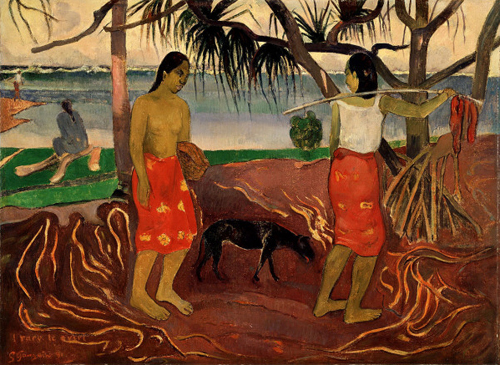
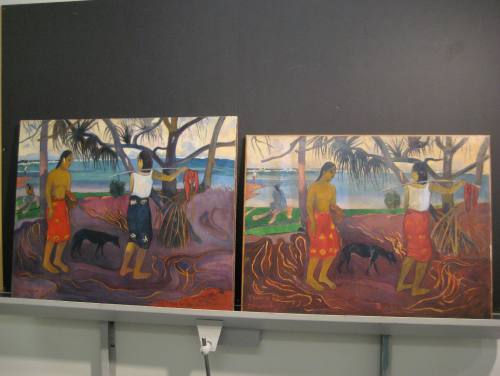
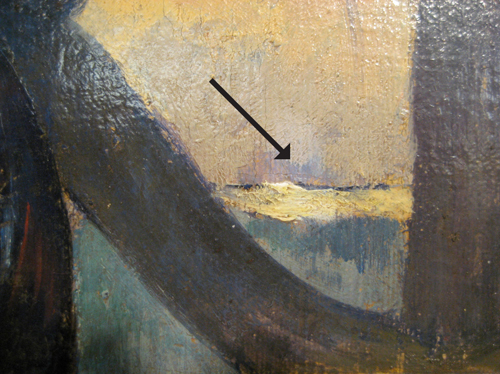
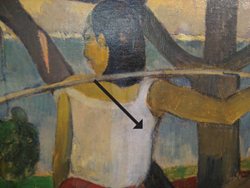
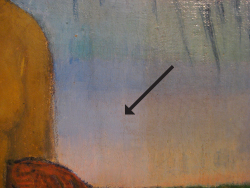
Always wondered what this field was about. Learned something new today. Thanks for the behind-the-scenes look.
Fascinating to those not trained in conservation! Can you kindly provide details of what material is used to remove the old varnish?
Thanks for your interest, Susan! Please visit this website for more information: http://www.si.edu/mci/english/learn_more/taking_care/painting_varnish.html
It would be fun and interesting to have a series of these (or rather, like works) in different phases of restoration for viewing.